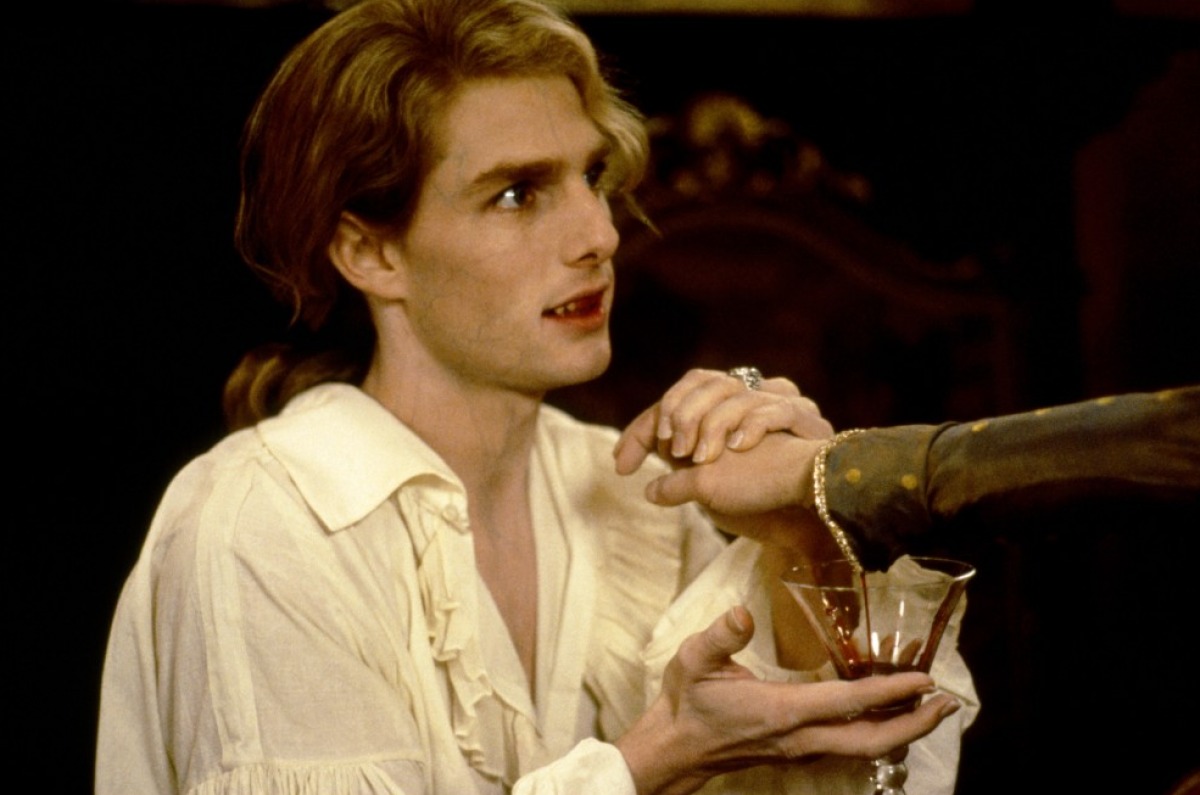
If you felt there was a long wait between this article and its previous instalment, you might empathise with Australian movie audiences 20 years ago: Interview with the Vampire was released on Nov. 11, 1994 in the US, but wasn’t screened in Australia until Dec. 26, 1994. But it could’ve been worse if you were in the Czech Republic (Mar. 16, 1995).
11. It Received Two Oscar Nominations
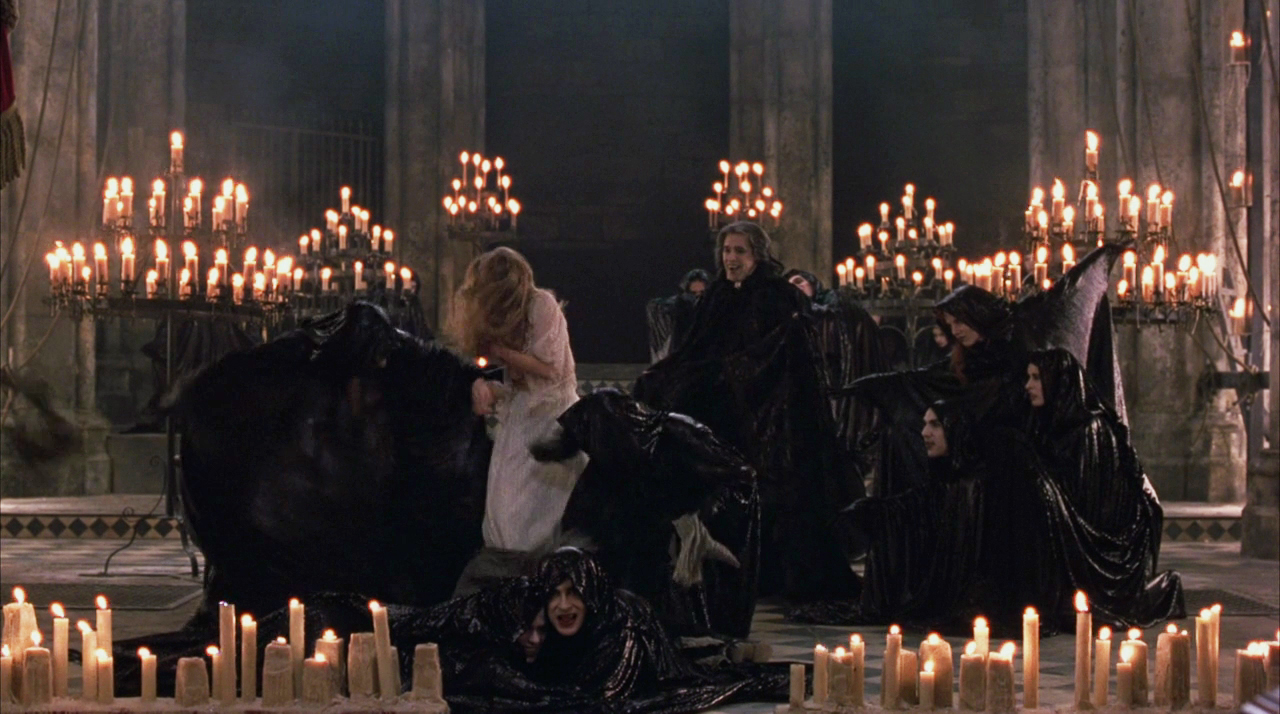
Dante Ferretti (Art Direction) and Francesca Lo Schiavo (Set Decoration) were nominated for Art Direction, but lost to Ken Adam (Art Direction) and Carolyn Scott (Set Decoration) for The Madness of King George (1994).
Elliot Goldenthal’s score was nominated for Music (Original Score), but lost to Hans Zimmer for The Lion King (1994). But it wasn’t a total loss for vampires that night: Martin Landau won Best Supporting Actor for his role as Bela Lugosi in Ed Wood (1994).
Sources:
- “The 67th Academy Awards | 1995,” Oscars.org.
- “Interview with the Vampire: The Vampire Chronicles,” Wikipedia.
12. Stan Winston Did the Vampire Special Make-up and Effects
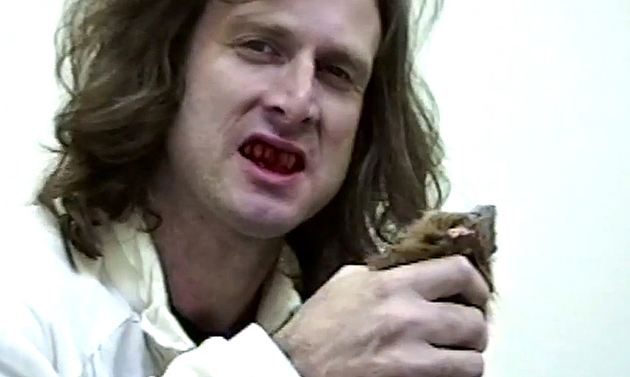
Stan Winston and his studio, best known for their work on films like Aliens (1986), Terminator 2: Judgement Day (1991) and Jurassic Park (1993), took on the comparatively minor task. Winston was convinced by his collaborators, John Rosengrant and Shane Mahan, to offer their services as both were huge fans of Rice’s book.
They “saw this as an opportunity to do a serious horror movie, in the tradition of the Hammer films” and “also a chance for us to do something completely different than Jurassic Park. We didn’t want to get typecast as the studio that only did big animatronics.” Despite the special effects studio’s excellent reputation, they still had to fight for the part. Winston recalled:
I hadn’t read the book yet, but I was a big fan of Neil Jordan as a director. So I put a call in to him, asking that he take a meeting with me regarding the film. And he was shocked to hear from me — shocked — because, to his mind, I was the ‘dinosaur guy’. He would never have thought of this studio for the makeup effects for Interview With the Vampire. I literally had to sell this studio and myself to him. I had to convince him that we did makeups, that I’d started doing makeups. Because I’d done dinosaurs, I had to fight to get that job.
Sources:
- David Sanger, “Interview with the Vampire – ‘Lestat Bites Rat’ Test,” with selections from The Winston Effect by Jody Duncan, Stan Winston School of Character Arts (Jan. 15, 2013).
13. It’s All About Guilt
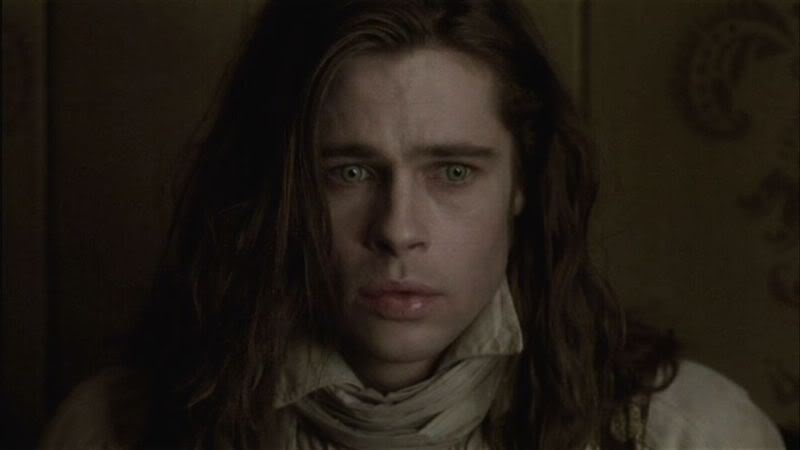
Neil Jordan, the film’s director, said the story’s deep vein of Catholic guilt was the reason he wanted to make the movie: “It was the most wonderful parable about wallowing in guilt that I’d ever come across. But these things are unconscious: I don’t have an agenda.” After mentioning that the film was also a reflection of his own feelings at the time and being asked what it said about him, he replied:
I’ve no idea but I’m always surprised years after making a movie about how it reflects your state of mind at the time or how low you are. I had a great time making this movie but there is a dark Catholic guilt underlying. And you know, Anne Rice comes from an Irish Catholic background; she bought an old convent in New Orleans when we were filming there.
Of her own work, Anne Rice told Sean Salai:
I think every book I’ve ever written has been informed by my Catholic education in New Orleans and of course the influence of Irish, German and French Catholicism were all strong on that upbringing. My imagery, sensibility, and theological concerns are all influenced by this background. As I am constantly evolving, as I wrestle with my religious background and concerns, I know this novel reflects changes. But I am not able to analyze them in detail yet. It’s too soon. I think I am always seeking redemption; the vampires represent those of us in society who feel damned and I am always seeking a way for them and those of us who identify with them to be saved.
Sources:
- “Interview with a Vampire Director Neil Jordan: I Had a Great Time Making This Movie, but There’s a Dark Catholic Guilt Underneath,” BelfastTelegraph.co.uk (Nov. 11, 2014).
- Sean Salai, “The Catholic Vampire: Author Q&A with Anne Rice,” America: The National Catholic Review (Oct. 8, 2014).
14. Brad Pitt Didn’t Like Kissing Kirsten Dunst, Either
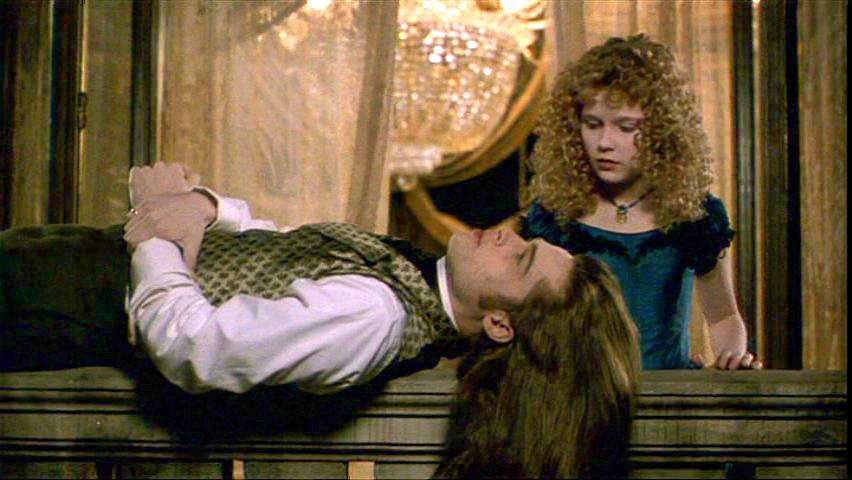
Dunst famously described her first on-screen kiss—with Brad Pitt, no less—as “disgusting” on the Sept. 23, 2014 episode of Conan. She was much more verbose about the on-screen kiss shortly before the film was released on Nov. 11, 1994.
When asked by Kristine McKenna what the hardest part of making the movie was, Dunst said: “Kissing Brad Pitt! It was horrible and I hated it. Brad and Tom [Cruise] were like my big brothers on the set, so it was like kissing your big brother–totally gross!”
Pitt told her: “How do you think I feel? I have to kiss a little girl.”
Sources:
- Kristine McKenna, “Interview with the Vampire’s Vamp: Movies: Kirsten Dunst Takes a Starring Role Opposite Tom Cruise in Stride, While Still Maintaining the Innocent Outlook of a 12-year-old Girl,” Los Angeles Times (Nov. 8, 1994).
15. The Fans Wanted Julian Sands
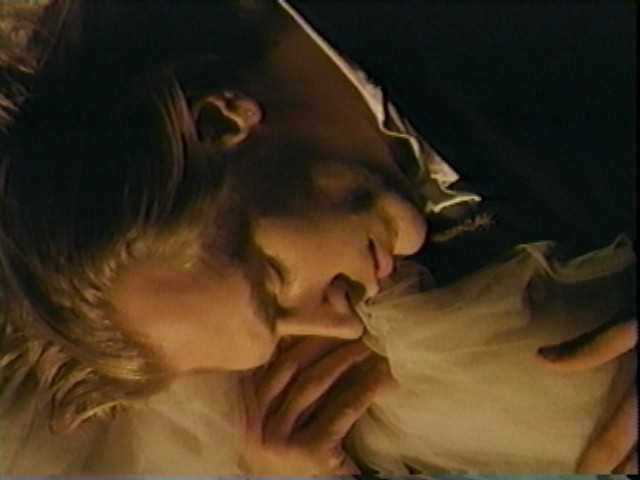
At the time Cruise was cast in the role, Rice and her fans clamoured for Julian Sands to take the part instead. He was best-known for starring in Room with a View (1985), Warlock (1989) and had experience playing a vampire character courtesy his turn in the title role of Tale of a Vampire (1992). As producer, David Geffen, elaborated in an interview with David Sheff:
Geffen: I get all these letters from people in Anne Rice’s fan clubs who are unhappy about Cruise playing Lestat. They wanted Julian Sands. But the director casts the movie, not the fans.
Playboy: Rice wanted Sands, too. Do you feel bad that the creator of a work is unhappy with what you are doing?
Geffen: I don’t feel bad about it at all. People were outraged when Vivien Leigh was cast in the role of Scarlett O’Hara. Today it is unthinkable that anybody else could have played it. The fact that someone writes a good book doesn’t mean their ideas for the movie are good. Margaret Mitchell had nothing to do with the movie version of Gone With the Wind, or Hemingway with that of For Whom the Bell Tolls. They sold the rights. That’s the way it works. And all the worry about Tom in this part will disappear when people see the movie. He is astounding. I guess all the criticism inspired him to do his best work.
Sources:
- David Sheff, “David Geffen,” David Sheff (2013). Originally published in Playboy (Sept. 1994).
- Robert Tilem, “The Vampire Chronicles,” letter to the editor, Los Angeles Times (Sept. 5, 1993)
16. Tom Cruise Wanted Brad Pitt’s Stature
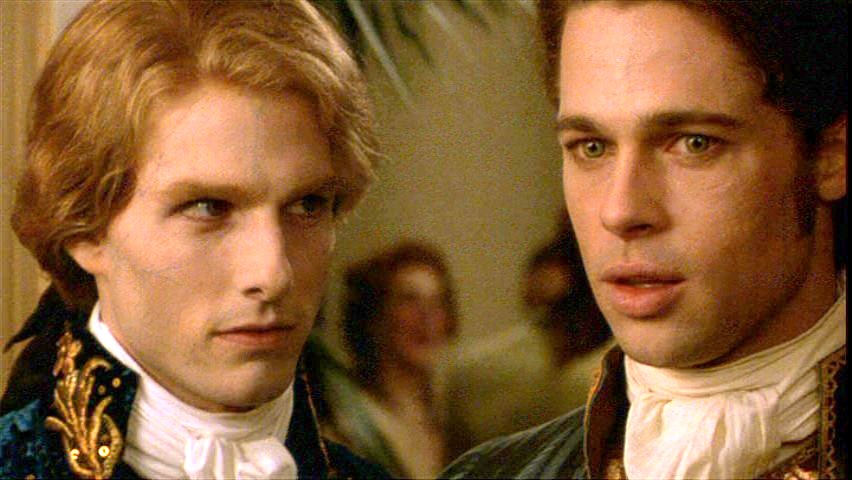
How did the film-makers resolve Cruise and Pitt’s height difference; 5′ 7″ (1.70 m) and 5′ 11″ (1.80 m), respectively? Tom had inches added to his boots and a ditch was dug for Pitt to walk alongside him when they filmed the night park scene.
Sources:
- Tara Aquino, “20 Pieces of Hollywood Trivia That Will Blow Your Mind!” Complex (Dec. 9, 2012)
- Lenny Ann Low, “Tom Cruise and Wilted Stars Don’t Seem to Be Cruising for Happy New Year,” Sydney Morning Herald (Dec. 31, 2013).
17. Ethan Hawke Modelled His Vampire Portrayal on Pitt’s
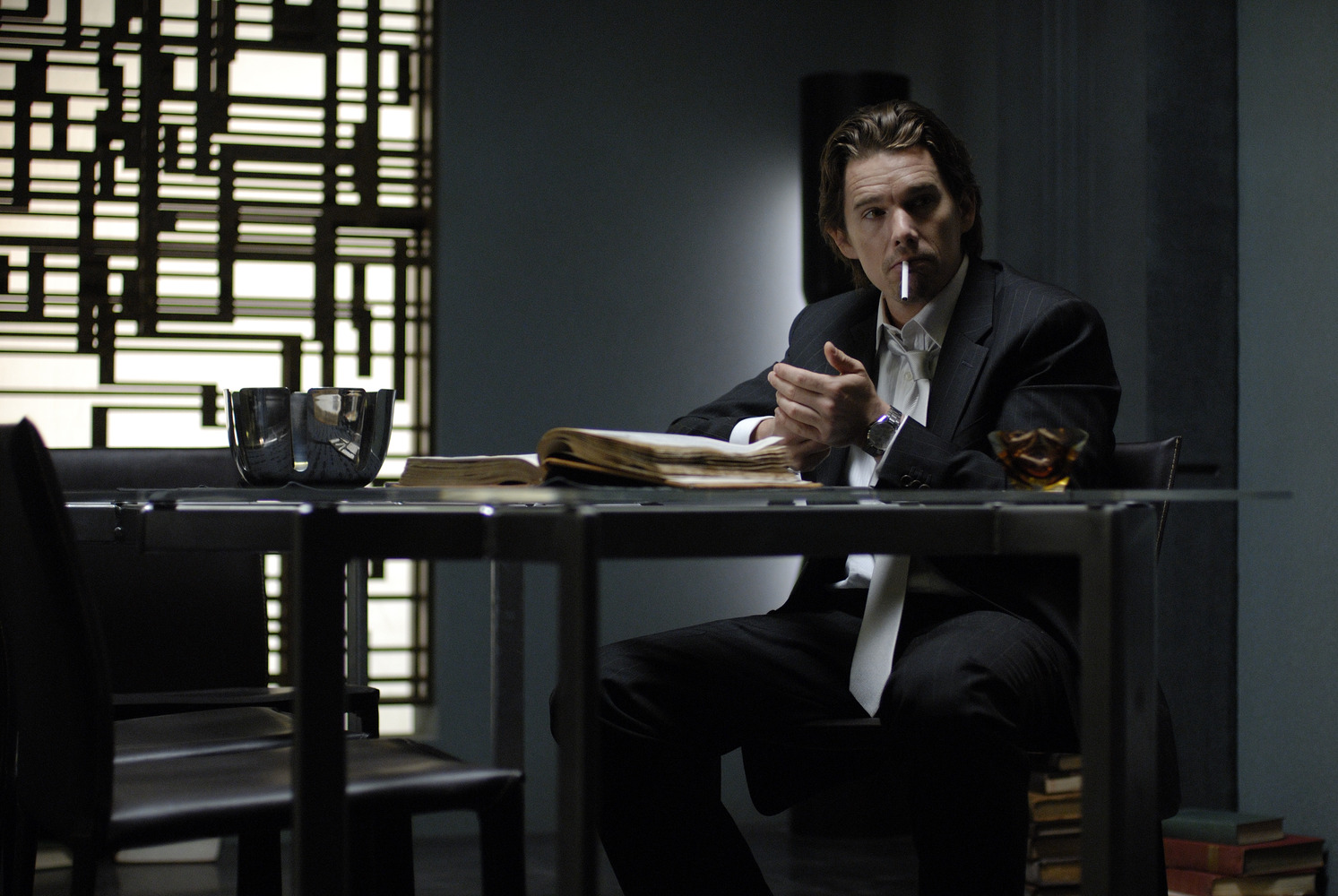
Ethan Hawke played Edward Dalton, a broody vampire seeking a cure in Daybreakers (2009). According to an interview with Meredith Woener, Hawke studied reluctant vampire portrayals like Adrian Pasdar’s Caleb Colton in Near Dark (1987) and Brad Pitt’s portrayal of Louis for inspiration:
I watched both of those movies. You know, it’s funny you say that because it’s a very hard character to do right. As soon as you start playing a self-loathing undead… The fun of being undead is that you get to do whatever the hell you want so you get to be liberated from anxiety and all this stuff, it’s weird. I felt like a lot of times [for] the actors who have done it — myself included in this — it’s a struggle to not be boring. All the other characters in the movie are more interesting than you, because there is nothing worse than watching an introspective, alienated, undead person. So I struggled with that. You just have to kind of embrace it.
Pitt has also discussed the struggle making the character in the movie seem interesting with Jeff Giles, saying: “Depression is not interesting to watch. It’s also the failure of my Vampire character.”
Pitt blamed changes between the novel and script: “In the movie, they took the sensational aspects of Lestat and made that the pulse of the film, and those things are very enjoyable and very good, but for me, there was just nothing to do–you just sit and watch.”
Sources:
- Jeff Giles, “Brad Pitt/The EW Interview,” Brad Pitt Press.com (Sept. 4, 2011). Originally published in Entertainment Weekly.
- Meredith Woerner, “Ethan Hawke Explains How to Keep Your Self-Loathing Vampire from Being a Bore,” i09 (Jan. 7, 2010).
18. Lestat Is Poisoned by “Dead Blood” in the Film, but Not in the Novel
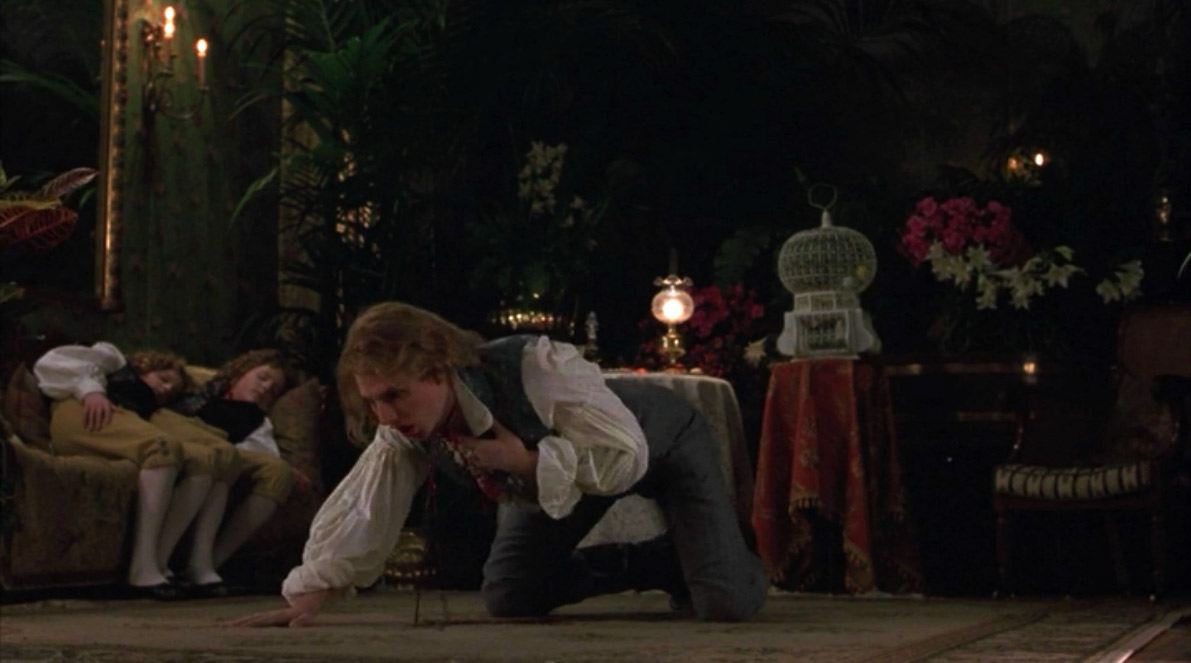
According to some depictions of vampires in fictional media, vampires can be poisoned with the blood of the dead. Examples include several episodes of Supernatural beginning with “Dead Man’s Blood” (April 20, 2006) and Theresa Meyers’ novel The Truth About Vampires (2011) for the Harlequin Nocture series.
The trope’s origin stem from the film; specifically regarding the confusion “dead blood” is supposed to have on vampires in the Interview with the Vampire film and novel. Here’s how the film’s IMDb FAQ page answers “Why did Lestat stop Claudia from drinking before the victim’s heart stopped beating?”:
Vampires drink blood because it sustains them. In the Ricean universe, a vampire must not drink blood from a dead person. “Dead blood” will make them seriously ill. And confirmed by Lestat’s own storyline IN the film, it does NOT kill him as some mistakenly think. The uncirculating blood becomes toxic and therefore, the vampire must stop drinking before the heart stops beating, even if there is more blood left in the victim’s veins. Lestat is forced to drink from a corpse in the novel’s sequel and all it causes is what he calls a temporary “rolling delirium.” It’s theorized that this dizziness is the result of the blood not gaining fresh oxygen through circulation.
But as Anne Rice said in 1994: “Why would dead blood affect a vampire? Why did Lestat get so hurt by drinking ‘dead blood?’ I don’t get it.” Fortunately, the issue was clarified by the Coven House of Rue Royale Sedition’s Brat Queen:
Claudia used poisoned victims to weaken Lestat in her attempt to kill him. The idea of dead blood doing anything but making vampires feel ill belongs solely to the movie.
This has caused some confusion. Drinking in the death, which can be fatal to a vampire, and drinking dead blood, which is not at all fatal to a vampire, are two different things.
In IWTV [Interview with the Vampire] the book, Lestat does say to Louis, “He’s dead, you idiot!” and “You don’t drink after they’re dead! Understand that!” But he clarifies this by saying, “You’ll die if you do that.” “He’ll suck you right down into death with him if you cling to him in death. And now you’ve drunk too much besides, you’ll be ill.”
This idea is mimicked in the movie when Lestat says to Claudia, “You must stop before the heart stops, lest the death drag you down with it.”
The meaning here is that the vampire must stop drinking before the victim dies so that he or she will not be pulled into the death as well when the victim is actively dying, it is the victim’s will and consciousness which will pull the vampire into death, not the blood.
Once the victim is dead, however, the blood does not have the power to pull the vampire drinking it into death because the victim’s will and consciousness is gone.
In the movie, when Lestat says incredulously, “You let me drink DEAD blood?!” and Claudia answers, “One thing you taught me, NEVER drink from the DEAD!” this gives the impression that drinking blood from a victim who has already died can be fatal to a vampire, but this idea is NOT in the books. Drinking dead blood is described by Anne as distasteful but not toxic and certainly not fatal.
Sources:
- The Brat Queen, “Vampires-o-Rama,” Coven House of Rue Royale Sedition, Incorporated.
- “Dead Man’s Blood (Object),” Supernatural Wikia.
- “FAQ for Interview with the Vampire: The Vampire Chronicles (1994),” IMDb.
- Theresa Meyers, “Top Ten Things Vampires Should Never Do,” Paranormal Romance (Feb. 28, 2011).
- Anne Rice, “From Anne Rice: On the Film, Interview with the Vampire,” Guide to the Children of Darkness (1994).
19. Santiago’s Dance Was Inspired by a Fred Astaire Movie
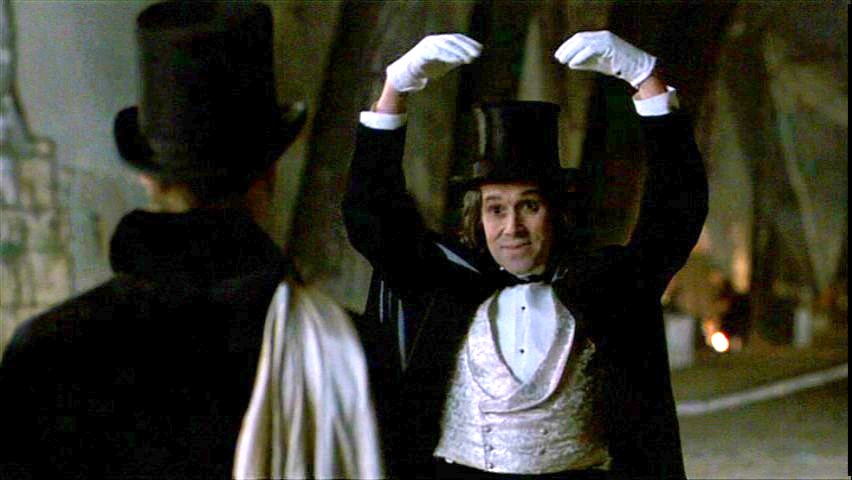
Remember the brief whimsical scene where Santiago (Stephen Rea) meets Louis in the Paris streets at night, then waltzes upside down on a tunnel wall? It was inspired by the famous show-stopping song-and-dance sequence in Fred Astaire’s movie, Royal Wedding (1951).
Both films used a rotating film set to achieve the effect. But notice how Santiago’s cape stays limp around him while he dances upside down? Since the movie doesn’t establish that a vampire’s clothes can defy gravity, it’s safe to assume the shot was a film-maker goof.
Sources:
- Ryan Lambie, “A Celebration of Rotating Movie Sets,” Den of Geek! (Jan. 9, 2013).
- “Video – Santiago, from Interview with the Vampire,” Stephen Rea: A New Appreciation.
20. Many, Many Actors Were Considered to Play Lestat
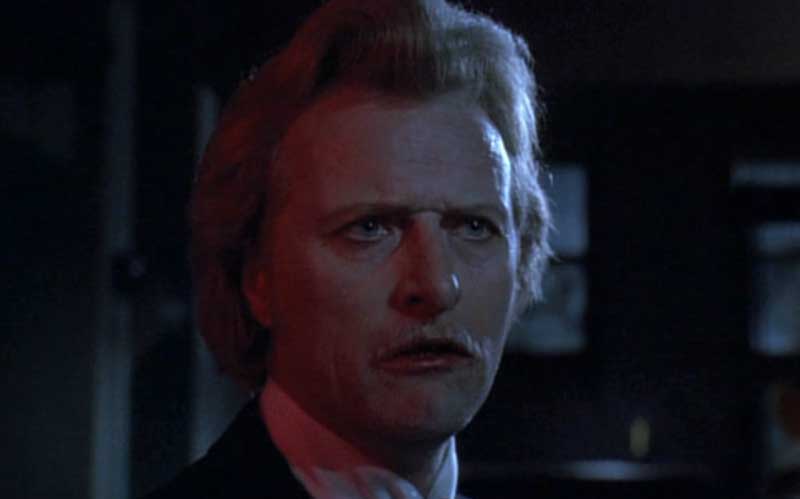
Probably the best-known trivia associated with the film is Rice’s initial displeasure with Tom Cruise being cast as Lestat. Soon after the casting announcement, she declared Cruise was “no more my Vampire Lestat than Edward G. Robinson is Rhett Butler” (Los Angeles Times, Aug. 23, 1993). But she changed her tune after being sent a VHS of the movie before its screening and wrote highly of his portrayal.
Though Julian Sands was a popular fan favourite and Rutger Hauer is often presented as a popular contender before being deemed “too old”; in fact, his likeness was used for a graphic novel adaptation of The Vampire Lestat (1985).
Rice had many actors in mind. Before her fateful screening, she shared her suggestions in an interview with Martha Frankel: Jeremy Irons, John Malkovich, Peter Weller, Alexander Godunov—and even Brad Pitt. “I tried for a long time to tell them that they should just reverse these roles–have Brad Pitt [who is cast as Louis] play Lestat and have Tom Cruise play Louis. Of course, they don’t listen to me.”
Rice had even written a script at the stage where Cher was considered a serious contender; as was Angelica Houston, turning the Lestat role into woman’s. Anthony Hopkins, Daniel Day-Lewis and Christopher Walken were also considered by the studios.
Nonetheless, Rice was ultimately happy with Cruise’s casting declaring: “I’m no good at modesty. I like to believe Tom’s Lestat will be remembered the way Olivier’s Hamlet is remembered. Others may play the role some day but no one will ever forget Tom’s version of it.”
Sources:
- “Anne Rice on Tom Cruise.”
- Judy Brennan, “Rice’s About-Face: Cruise Is Lestat: After Screening ‘Interview with the Vampire,’ Author Lauds His Work,” Los Angeles Times (Sept. 21, 1994).
- Cynthia Dermody, “Rutger Hauer Joins ‘True Blood’ as Season 6’s Creepiest Vampire Yet (VIDEO),” The Stir (March 13, 2013).
- Martha Frankel, “Anne Rice: Interview with the Author of Interview with the Vampire,” Movieline (Jan. 1, 1994).
- Rutger Hauer, “Rutger Hauer Autographed Unique ‘The Vampire Lestat’ Graphic Novel Book!!” Rutger Hauer Official Website.
- Kevin Sessums, “Cruise Speed,” Vanity Fair (October 1994).
Neil Jordan went onto direct another highly-acclaimed vampire film: Byzantium (2013). Jordan discussed his experience making vampire movies in an interview with Paul Schrodt, “Q&A: Neil Jordan, Master of the Vampire Movie” (Esquire, June 27, 2013).
If you’re wondering whether there’ll be more films to follow, there will: and chances are, they’ll be reboots after Universal’s acquisition earlier this year of the film rights to the Vampire Chronicles series. Read Jeff Sneider’s article “Anne Rice’s ‘Vampire Chronicles’ Series Lands at Universal, Image” (The Wrap, Aug. 7, 2014) for more details.
Twenty years leaves enough time for a good retrospective. Check out Britt Hayes’ Screen Crush article, “See the Cast of ‘Interview with the Vampire’ Then and Now” (Jan. 12, 2014).
4 comments
Comments are closed.